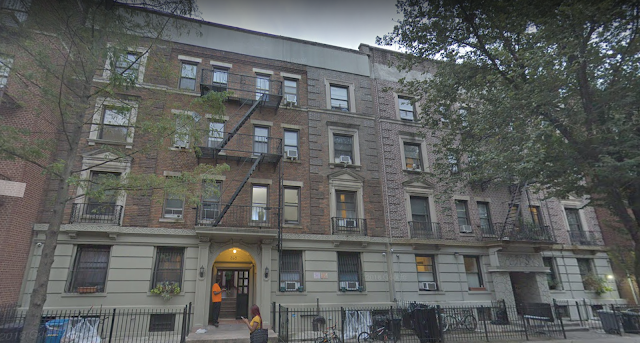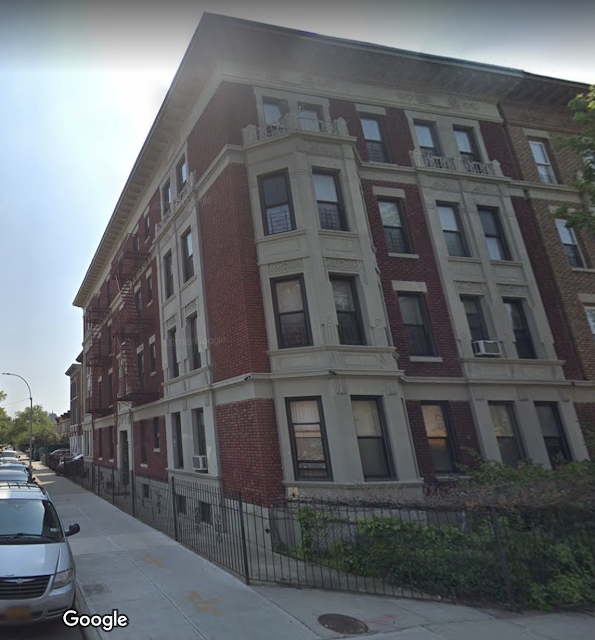With warm weather approaching, this issue will focus on roof gardens in PLG. (Bet you didn't know they existed!) Beginning in the early 1900's, roof gardens were promoted by social reformers and builders in New York City as way to use otherwise "wasted" space on top of apartment buildings to provide a place for children to play that was close to their parents and away from the dust and dangers of the street, as well as an amenity for residents who could enjoy cool air and views in the summertime. Some roof gardens were equipped with playground equipment and deck chairs, others might have had just an awning covered walkway or deck. Ellis Island got a children's roof garden in 1908, as part of a complete renovation of facilities to improve the experience of immigrants who were detained there for long periods of time.
265 and 273 Ocean Avenue - Designed by Slee and Bryson for Charles Chase in 1913, this pair of brick and limestone buildings featured "All Modern Improvements" including electric lights and steam heat, plus amenities like a roof garden and 24 hour "hall service" (this meant a porter or doorman). The building was dubbed the "Saint Charles" (perhaps the builder had a high opinion of himself!) Slee and Bryson were also active in the PLG historic district, designing brick houses on Fenimore, Rutland, and Midwood, most of the free standing houses on Lincoln 1, and the Grace Reformed Church on Lincoln and Bedford.
(sadly both buildings seem to have lost their cornices on top and one got hit with the ugly stucco stick on the entryway)
145 Lincoln Road - This 6 story elevator building with a fanciful, turreted facade was built in 1929 by Gustav Kellner, who also built dozens of other apartment buildings in PLG and Flatbush, as well as his personal home on Maple 1. The architect was Boris W. Dorfman, a Russian Jewish immigrant who also designed several other apartment buildings in PLG and Flatbush (including 99 Ocean Avenue which also had a roof garden). In addition to the roof garden, the building featured cedar closets and Murphy beds.
232-234 Midwood Street - Of course the flat roof of a townhouse is also a great place to build a roof garden. Roof gardens are back in vogue today, in the form of "green roofs". Green roofs involve covering portions of the roof with soil and plants, usually sedums or grasses, that help to insulate the roof and absorb excess storm water. They are being used to grow vegetables, raise chickens and even bees in Brooklyn today. "PLG Rooftop Honey" was a hot selling holiday gift item at local stores a couple of years ago. Does anyone know where exactly it was made?
These two brick townhouses were likely designed by architect William Fernbach in 1907-1908. Apart from the color of the brick, which is tan rather than white, and a different decorative design on the roof cornices, their form and ornamentation is exactly the same as the rest of the townhouses on this block.
(Note the safety railing on top of the roof at 232 Midwood!)















